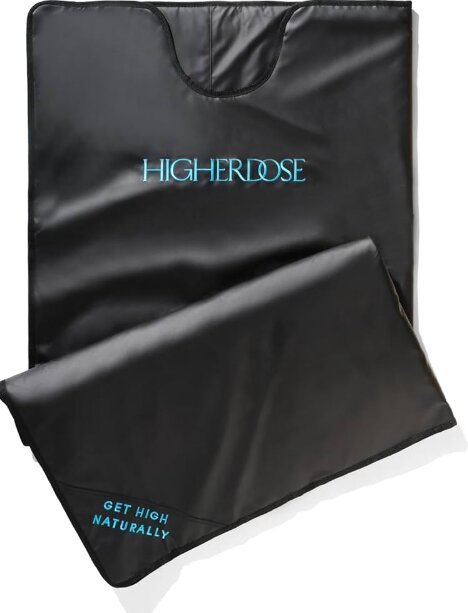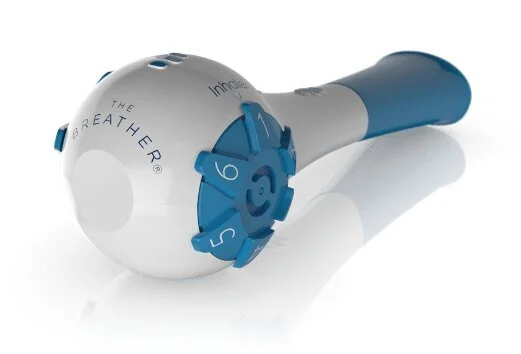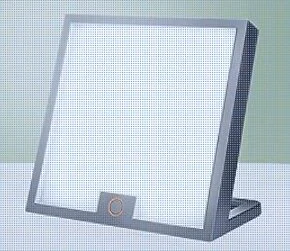How To Biohack On A Budget (With Upgrade Options)
Listen to the podcast version of this article.
"The first wealth is health."
—Ralph Waldo Emerson
When patients come seeking advice on the "best" supplements, the latest fitness gear, and hopping on trendy diets while neglecting the fundamentals, it raises red flags. I consistently return to two fundamental questions:
Why? What's the underlying purpose and goal?
Are you hitting the basics?
In essence, are they stepping over dollars to pick up pennies? If they're investing in supplements but eating a highly ultra-processed diet or buying blue light blockers but only getting 6 hours of sleep then it's time to revisit the basics. And by basics, I mean our evolutionary fundamentals.
While biohacking may seem intriguing and enticing, and there's always a market for it (much like laundry finding its way onto the treadmill), the critical question emerges: what is the point of biohacking and do we need all of that fancy equipment and all of those products?
The answer is no.
You start with the basics and that comes with a fortunate side effect: saving money. This article focuses on the best ways to biohack on a budget and what to consider before looking at anything that has a dollar sign in front of it.
What's The Purpose Of Biohacking?
In the quest for optimal health, a divergence exists between the ancient ways of our ancestors and the contemporary practice of biohacking. Unlike the deliberate methods of today, our forebears didn't resort to sauna blankets, cold plunges, or supplements to secure longevity and well-being. Instead, their robust health was a spontaneous result of the strenuous activities essential for daily survival.
The ancestral approach to well-being revolved around a lifestyle inherently fostering resilience and vitality. Physical activity wasn't a conscious health pursuit but an intrinsic part of their survival routine, involving an average of 20,000 steps a day through hunting and foraging. The acts of rucking and lifting occurred due to the need to transport food for miles and build homes.
The juxtaposition of ancestral living and modern biohacking marks a transition from intrinsic, necessity-driven health practices to intentional, science-informed interventions. Biohacking aims to emulate, optimize, or enhance these ancestral health principles within the context of contemporary, often sedentary lifestyles and altered environmental exposures. By understanding and incorporating elements of our ancestral past, biohacking seeks to bridge the gap between our evolutionary heritage and the challenges of contemporary living, aiming to promote holistic well-being and longevity.
Biohacking is a form of better living through science. But oftentimes times the expensive stuff gets in the way of the roots of the practice. Let’s dive into these roots, how to biohack on a budget, and ways to upgrade your practice as appropriate.
Biohacking Strategies Mentioned
Grounding or Earthing
Breathwork
Cold Exposure
Heat Exposure
Walk 8,000-10,000 Steps Per Day
Get Your Electrolytes
Fast
Do Balance Training
Get Sun
Optimize Sleep
Meditate
Nature Bathe
Eat Organ Meats
The Best Biohacks On A Budget
Grounding or Earthing
The benefits: Grounding or earthing is simply the practice of direct physical contact with the Earth's surface, which is thought to facilitate the transfer of electrons resulting in improved physiological processes through the modulation of inflammatory and oxidative stress markers. This practice has been shown to improve sleep, blood pressure, HRV, and recovery after exercise and decrease inflammation, pain, and fatigue.
On a budget:
Walking barefoot outside on natural grounding surfaces like grass, sand, or soil is one of the most effective ways to do grounding. This method allows for direct contact with the earth's surface and allows the body to absorb the earth's natural electrical charge.
The upgrade:
You can buy a grounding mat, grounding sheet, or grounding patches that connect the earth right to your body. This is a great alternative if you can’t consistently get outside to do earthing. I use a small rectangular grounding mat as I do my writing which has a wire that connects to that third hole of a standard 3-prong receptacle in an outlet. You can take it a step further and get larger ones to sleep on.
You can also use conductive footwear, such as shoes with copper inserts. I occasionally use a pair of Earth Runner sandals, which have a copper wire that connects your feet to the ground.
Cold Exposure
The benefits: Getting cold, a.k.a. cold exposure, involves simply exposing your body to cold water or air temperatures. Cold exposure has been shown to improve circulation, immune system, and mood (including reducing symptoms of depression) and reducing inflammation and muscle soreness.
On a budget:
Go for a walk outside in cold temperatures with limited layers.
Take cold showers. Work up to this by ending each shower with 1-2 minutes of as-cold-as-possible water.
Or you can fill your tub up with cold water and dump a few bags of ice in.
The upgrade:
While cold tubs can easily get into the 1,000's of dollars, I've found that the Ice Pod is a great alternative that is both cheaper (around $140) and durable. Find my review of it here.
Walk 8,000-10,000 Steps Per Day
The benefits: Regular walking has been associated with improved cardiovascular fitness, enhanced mood, glucose control, weight management, and even improved creativity. Additionally, it plays a crucial role in maintaining joint flexibility, improving lifespan, and reducing the risk of chronic conditions. On the contrary, not getting enough steps raises concerns such as increased risk of obesity, cardiovascular diseases, and worse mental health.
On a budget:
Get outside and walk.
The upgrade:
Incorporate alternative activities like rucking.
If it's tough to get outside for a walk, consider a walking desk or a Desk Bike for a seated yet active workstation as a substitute for walking.
Heat Exposure
The benefits: Heat therapy, (the most common form being sauna sessions), promotes vasodilation, enhancing blood flow and circulation, which can contribute to cardiovascular health that mimic exercise. Additionally, the induced sweating facilitates the elimination of toxins. Using the sauna has also been shown to improve sleep, reduce inflammation, enhance skin health, and even reduce all-cause mortality by 40%!
On a budget:
Spend more time outdoors on hot days (while protecting your skin from prolonged direct sun). Do yard work, go for walks, or do workouts to amplify the process.
The upgrade:
Get in a sauna. If you have access to a gym or wellness center with a sauna, use it. If not, then consider a sauna blanket. I have two hyperthermia devices I use: the HigherDose sauna blanket, which is portable, durable, easy to clean, low-EMF, and made of non-toxic materials. And the Saunabox Steamkit Pro, which is way cheaper than most steamroom saunas, portable, and easy to set up. Oh yeah, they both get really hot.
Note: Make sure to stay hydrated and get adequate amounts of electrolytes. Slowly build up your heat exposure tolerance over a period of weeks and months.
Get Your Electrolytes
The benefits: Ensuring adequate electrolyte intake is crucial for maintaining optimal nerve and muscle function, supporting proper hydration, and promoting overall bodily balance. Electrolytes play a pivotal role in facilitating water retention, preventing your sips of water from going right through you. This translates to improved physical performance, better concentration, and sustained cognitive function. On the contrary, insufficient electrolytes can lead to concerns such as dehydration, muscle weakness, and imbalances in crucial minerals, which can impact cardiovascular and neurological health.
On a budget:
One way to ensure you're getting enough electrolytes is to eat whole foods that contain them. Make an electrolyte drink that includes sea salt, banana, leafy greens, and a variety of nuts and seeds to ensure you're hitting all of the major types of electrolytes.
The upgrade:
My favorite powder is Redmond Re-lyte Electrolyte Powder. with LMNT and IQMix coming in closely behind. For drinks, Nooma Organic Electrolyte Sports Drink is the winner. For tablets, go with Nuun Sport.
See here for a full ranking of the best electrolyte options.
Breathwork
The benefits: Breathwork involves intentionally controlling your breath's speed, depth, and awareness to either activate the calming parasympathetic nervous system or the fight or flight sympathetic nervous system depending on your goals. The benefits of breathwork include improved sleep, digestion, reduced pain anxiety, and depression, as well as providing an improved sense of relaxation and well-being.
On a budget:
If your goals are to increase alertness then choose a breathwork strategy such as bellows breath or holotrophic breathwork. if your goals are for relaxation then consider resonance breathing or extended exhales (my favorite). Choose a few to practice and pull them out of your toolbox when you need them.
There's no shortage of apps focused on breathwork, either. My favorite is Headspace (which has a free version) but find a list of other breathwork apps here. It's worth noting that you should not do any breath holds in unsafe situations such as in water or standing.
The upgrade:
Use a device such as the THE BREATHER to provide resistance to your inhalations and exhalations to improve your lung and diaphragmatic strength.
Fast
The benefits: Fasting, when practiced appropriately, has been associated with various benefits, including improved metabolic health through enhanced insulin sensitivity, promotion of autophagy for cellular repair, potential longevity-promoting effects by activating sirtuins, and support for enhanced cognitive function—a diverse approach to overall well-being.
On a budget:
Fasting not only reduces food costs but it also serves as a direct cost-saving measure since you're eating fewer meals.
The upgrade:
Experiment with the different kinds of intermittent fasting. Try them all out: 16:8, alternate day fasting, 5:2, etc. See what works best for your body and schedule it in. Start small and work your way up, with your doctor’s involvement.
Elevate your fasting experience by incorporating activities like fasted workouts (such as walking or lifting) and consider supplementing with amino acids to support muscle preservation and digestive enzymes to promote autophagy.
Do Balance Training
The benefits:
Doing activities that challenge your balance not only makes you more physically fit but also helps you avoid falls, which can be a big concern as you get older. If you neglect balance exercises, it's like leaving your body's stability defense system on the sidelines, making you more prone to injuries. Picture it as a trio: your eyes (visual system) helping you see, your body (proprioceptive system) figuring out where you are, and your inner ear (vestibular system) keeping you steady. When these work together, you've got a strong defense against imbalance.
On a budget:
Strengthen your balance without spending much by walking barefoot regularly and incorporating simple exercises like standing on one foot while performing daily activities such as brushing your teeth.
When you work out, incorporate more single-arm or single-leg exercises and more rotation to teach your body how to be asymetrical comfortably.
The upgrade:
Buy minimalist shoes like Xero Shoes or Merrel’s (the Vapor Glove is my favorite). These not only improve your balance and increase your proprioceptive awareness,but they strengthen your feet and your arches.
Additionally, using things that challenge your equilibrium such as balance boards and slack lines improves your balance. Here are some good options:
Get Sun
The benefits: Sun exposure facilitates the synthesis of vitamin D in the skin, crucial for maintaining adequate serum 25-hydroxyvitamin D levels, which, in turn, support bone mineralization, immune function, and calcium homeostasis. Exposure to natural sunlight also impacts the circadian rhythm, influencing the secretion of melatonin and serotonin, which regulates our sleep-wake cycles and mood regulation. Concerns arise when we don’t get enough sunlight, leading to potential vitamin D deficiency, compromised immune function, and an increased risk of mood disorders.
On a budget:
Get outside. Aim for at least 15–30 minutes of sun exposure on your skin, particularly arms and face, at least once a day. Getting sun through clouds counts (although you’ll have to stay outside longer to reap the rewards) and getting it through a window does not count (because the glass blocks UVB rays). Use an app like Luxmeter to see that you actually get more sun than you might think through clouds).
The upgrade:
Use a SAD lamp, particularly during winter months or in environments with limited sunlight exposure. These interventions simulate natural light, effectively mitigating potential Seasonal Affective Disorder (SAD) symptoms. Furthermore, red light therapy has been shown to stimulate cellular energy production, enhance skin health, and promote tissue repair.
Get sunshine in a pill. I supplement with vitamin D from October to March due to shorter days and a lower angle of the sun. Learn more here.
Additionally, red light therapy has recently been shown to provide a host of benefits related to skin health, recovery, mood, and more. Here are a few devices I use:
The Lumaflex Essentials: For portable, flexible full-body or large-area recovery with a wraparound, water-resistant design.
Bon Charge Mini: For fast, targeted sessions on skin, scars, or small areas.
Prungo FluxGo: For joint-focused relief and localized recovery on knees, ankles, wrists, shoulders, and even scalp use.
Optimize Sleep
The benefits: Adequate sleep, typically defined as 7-9 hours for adults, is crucial for various aspects of health, including improved memory consolidation, enhanced mood, and a bolstered immune system. Studies have shown that consistent sleep deprivation (<6 hours in many studies), is associated with an increased risk of chronic conditions, such as cardiovascular diseases and metabolic disorders; impaired cognitive performance and concentration and is also linked to a heightened risk of developing mental health disorders such as anxiety and depression.
On a budget:
Turn your bedroom into a sleep sanctuary by using: black electrical tape to cover lights from electronics (e.g. humidifiers, baby monitors, fans), a white noise sleep app, and turning your phone on airplane mode or placing it in another room.
Adhere to a sleep window: avoid food, exercise, stress (work, stressful movies, certain books), and screens for 2-3 hours before bedtime. Utilizing candles instead of lightbulbs can also create a conducive sleep atmosphere. A safe candle option are ones made of beeswax like these or scented ones like these.
The upgrade:
Quality sleep is one of the most effective things you can do for your health so I consider each of these sleep tools an investment. Here are my favorites in order of effectiveness:
Mouth tape (SomniFix is a great brand, use MINDBODYDAD for 10% off)
Blackout curtains
Blue light blocking glasses to reduce exposure to stimulating light before sleep
Blue-light free lightbulbs for evening use to minimize melatonin and cortisol imbalances.
Read about the science behind these sleep tools here.
Meditate
The benefits: Regular medication reduces stress, anxiety, and symptoms of depression, and it improves emotional regulation, focus and attention, and sleep quality.
On a budget:
Sit down, close your eyes, and focus on your breathing. It’s as simple as that. This is at the root of meditation and anyone trying to sell you or tell you more should be viewed skeptically.
The upgrade:
That being said, you can do a couple of things to enhance the experience and help with the focus and the hotel immersion of meditation.
Consider a comprehensive meditation app that can help keep you focused and teach you the different types of meditation. The free version may suffice or you can pay for more features. This is why I use the Headspace app.
For a more immersive experience, consider doing a multi-day meditation retreat. This is on my bucket list but the main reason I haven’t pulled the trigger is that it’s suggested that you do one that is at least 3 or 4 days long to truly reap the benefits.
Nature Bathe
The benefits: Nature bathing, also called forest bathing (Shinrin-yoku in Japanese), is immersing oneself in natural environments. As basic as it sounds, there is science behind indicating that it is linked to lower blood pressure, better sleep, improved memory, reduced stress, and enhanced overall well-being. On the contrary, insufficient exposure to nature is associated with heightened levels of stress, diminished mood, and an increased risk of mental health issues.
On a budget:
At the most basic level, even exposure to house plants can provide some benefits. More exposure in more natural environments provides more benefits so progress to walking in a neighborhood park, for a more immersive experience go on a hike in a park or forest.
The upgrade:
Plan a trip to a National Park. My recommendation: Yosemite.
Eat Organ Meats
The benefits: Organ meats, such as liver and heart, are rich in essential nutrients like vitamins A, B12, and iron, supporting optimal physiological function and red blood cell production. They also contain high levels of bioavailable minerals like zinc and copper, crucial for immune health and metabolic processes. Incorporating organ meats into the diet provides a nutrient-dense source that aligns with ancestral dietary patterns and contributes to overall well-being.
On a budget:
Find a butcher or farmer at your local farmer's market and ask for specific organ meats. My favorite way to cook them is with high-flavor foods that mask the smell. I sauté the organ meats in a skillet with bacon, red onions, and garlic and mix them into a salad.
The upgrade:
Buy organ meats from US Wellness Meats. They offer a wide range of options, such as craft sausages and ground beef blends with a subtle organ kick. Explore their selection of beef heart, kidney, tongue, and more, all ethically sourced and expertly prepared.
Still not into chewing any organ meats? Go with a high-quality capsule. Look for brands using grass-fed, antibiotic-free animals and a blend of different organs. The Left Coast Performance capsules on Amazon tick all the boxes.
Related:








